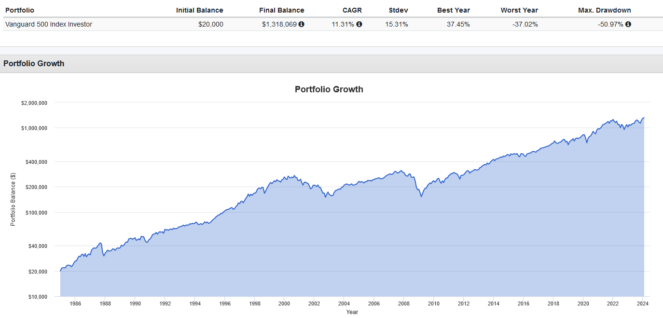Many investors often overlook what is arguably their greatest asset in the realm of investing. It’s not the knack for picking the hottest stock or ETF, nor is it the timing prowess to enter and exit the market at precisely the right moments.
Instead, the most potent weapon in an investor’s arsenal is time, coupled with the power of consistent contributions and the strategic reinvestment of dividends. These elements, when harnessed effectively, can compound even modest sums into substantial wealth over the long haul.
Let’s explore how a disciplined approach to investing in and holding the BMO S&P 500 Index ETF (TSX:ZSP), one of Canada’s most popular ETFs, could potentially escalate your portfolio to the million-dollar mark.
Why invest in ZSP?
ZSP, recognized as the most popular ETF in Canada, boasts $12.5 billion in assets under management for two primary reasons that make it an attractive investment option.
Firstly, ZSP tracks the venerable S&P 500 Index, a benchmark that encapsulates 500 of the largest U.S. companies, carefully selected by the Standard & Poor’s committee.
This index, designed to reflect the performance of the U.S. economy, includes a diverse set of companies across various industries, making it a robust representation of the market’s overall health.
The S&P 500 is renowned for being challenging to outperform, with a historical track record of delivering an average annualized return of about 10%.
Secondly, ZSP is an appealing choice for cost-conscious investors due to its low expense ratio. Since the ETF replicates the S&P 500, it doesn’t incur the high fees associated with active management. With an expense ratio of just 0.09%, the cost of investing $10,000 in ZSP amounts to approximately $9 per year.
An historical example
While ZSP itself has been available to investors since November 2012, we can look to the history of its benchmark, the S&P 500, for a longer-term perspective on the potential impact of a consistent investment strategy.
To understand how investing in a vehicle like ZSP could perform over an extended period, we can refer to a U.S. mutual fund that tracks the S&P 500 as an historical example.
Consider this scenario: starting in 1985, an investor puts an initial sum of $20,000 into the fund and then holds it through thick and thin, reinvesting dividends when received.
This approach, maintained diligently over the years, would have seen the investment grow to over $1.3 million by the present day.

What’s crucial to highlight here is what made this strategy successful. Dividends received from the investment weren’t taken as cash but instead reinvested, buying more shares of the fund, which compounded the growth effect. Equally important was the resolve to hold onto the investment through various market conditions, including bear markets and financial crises.








